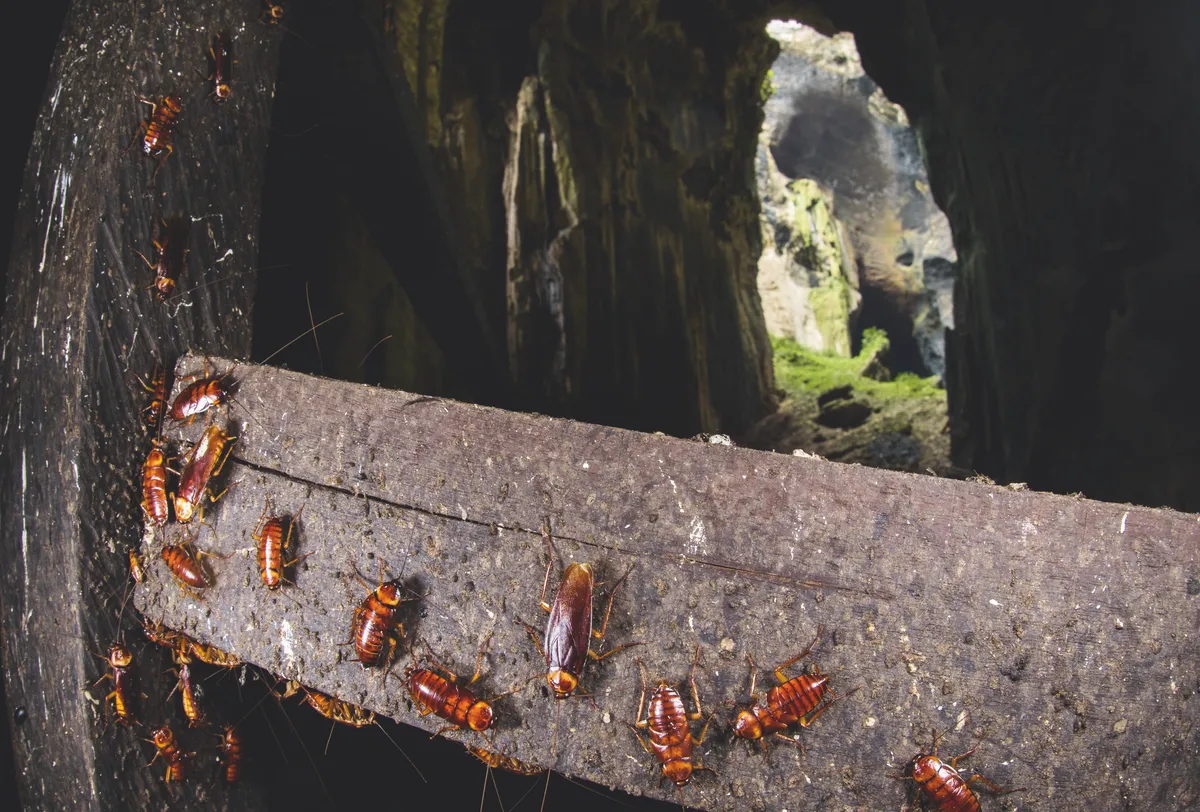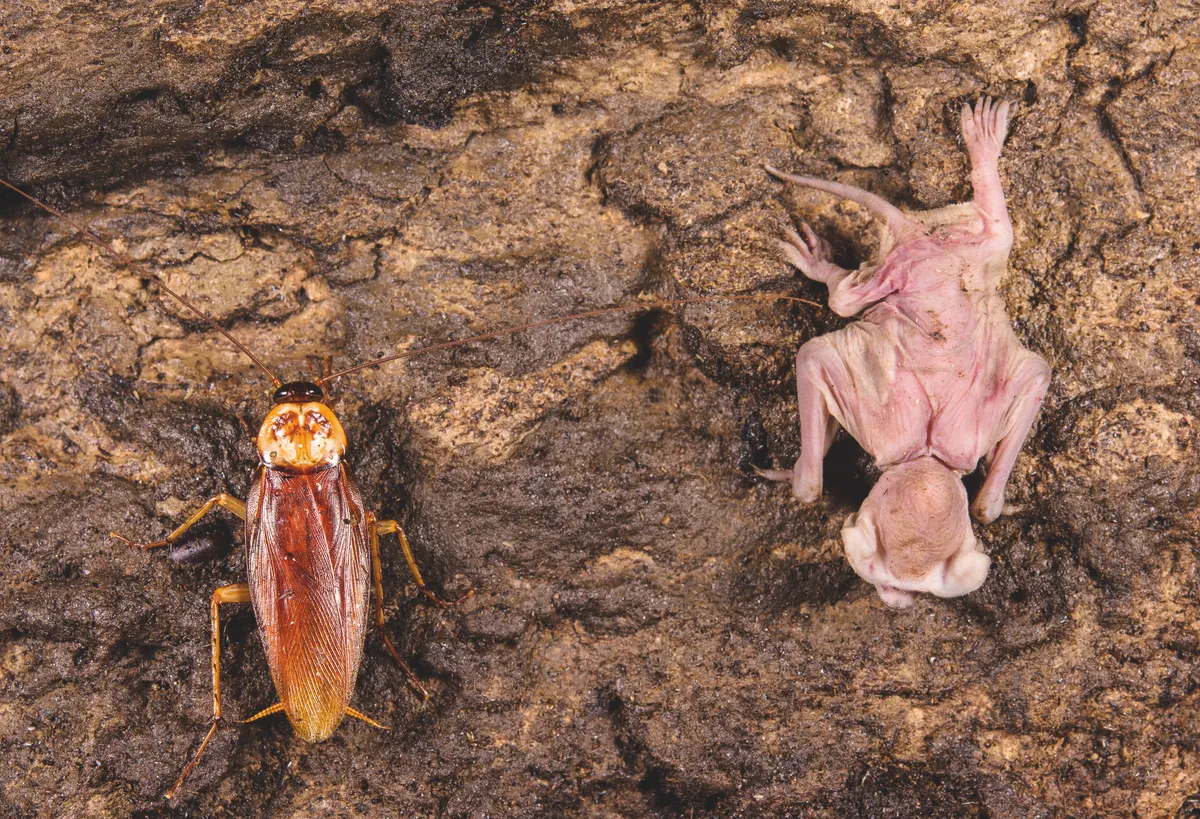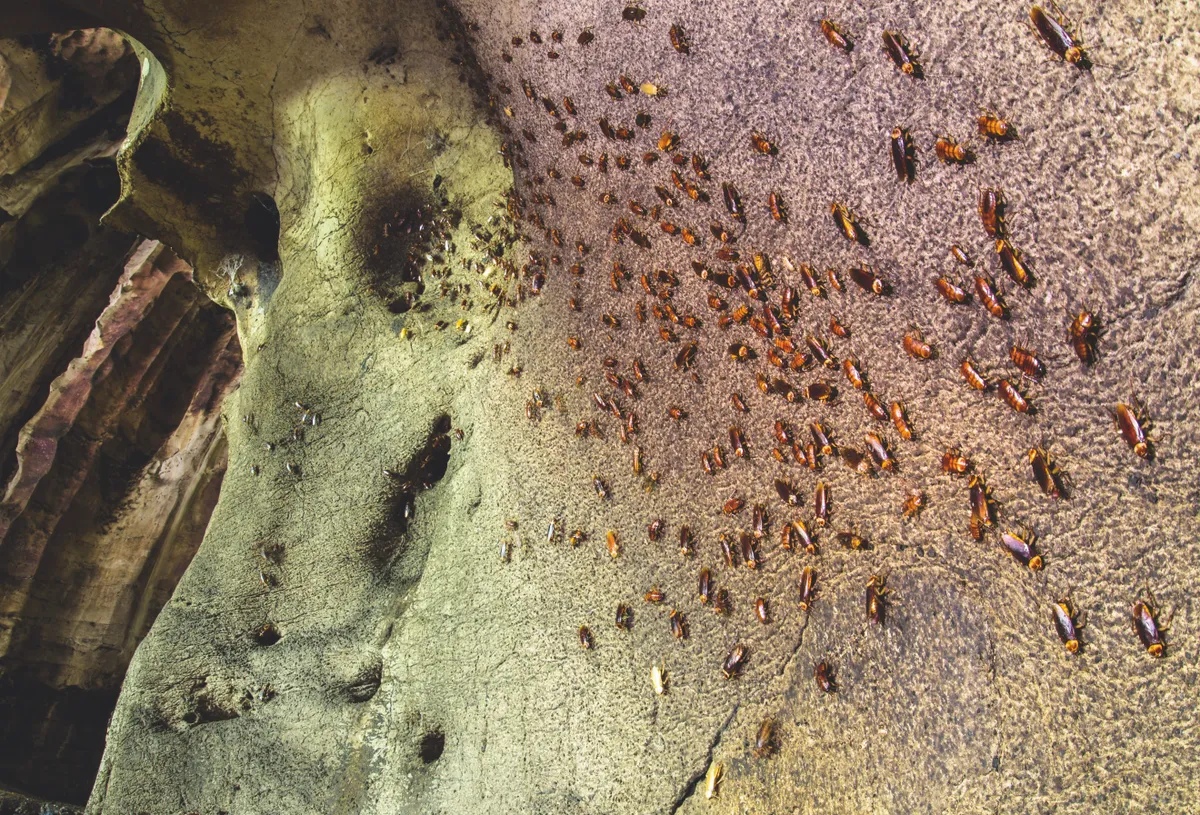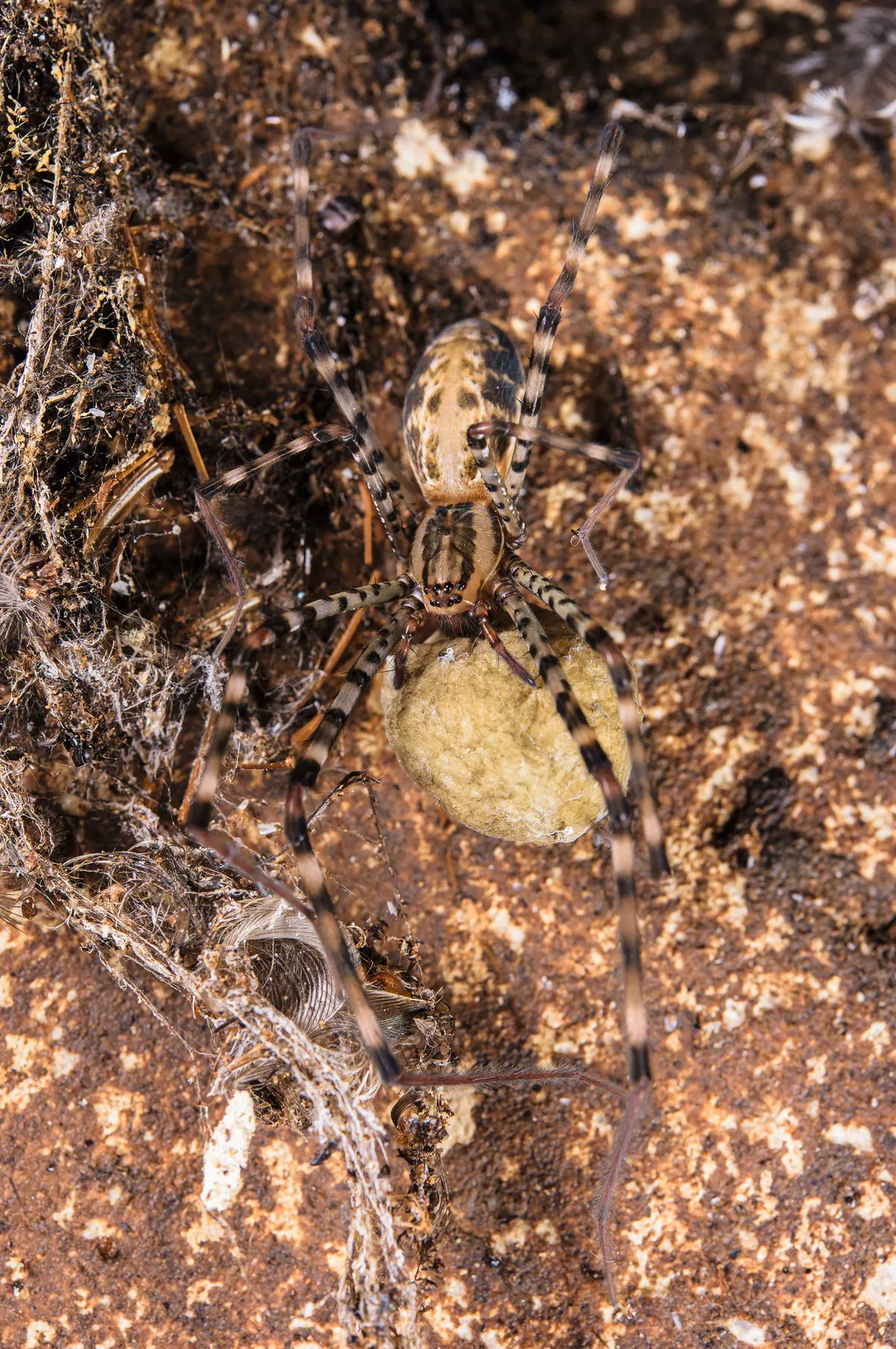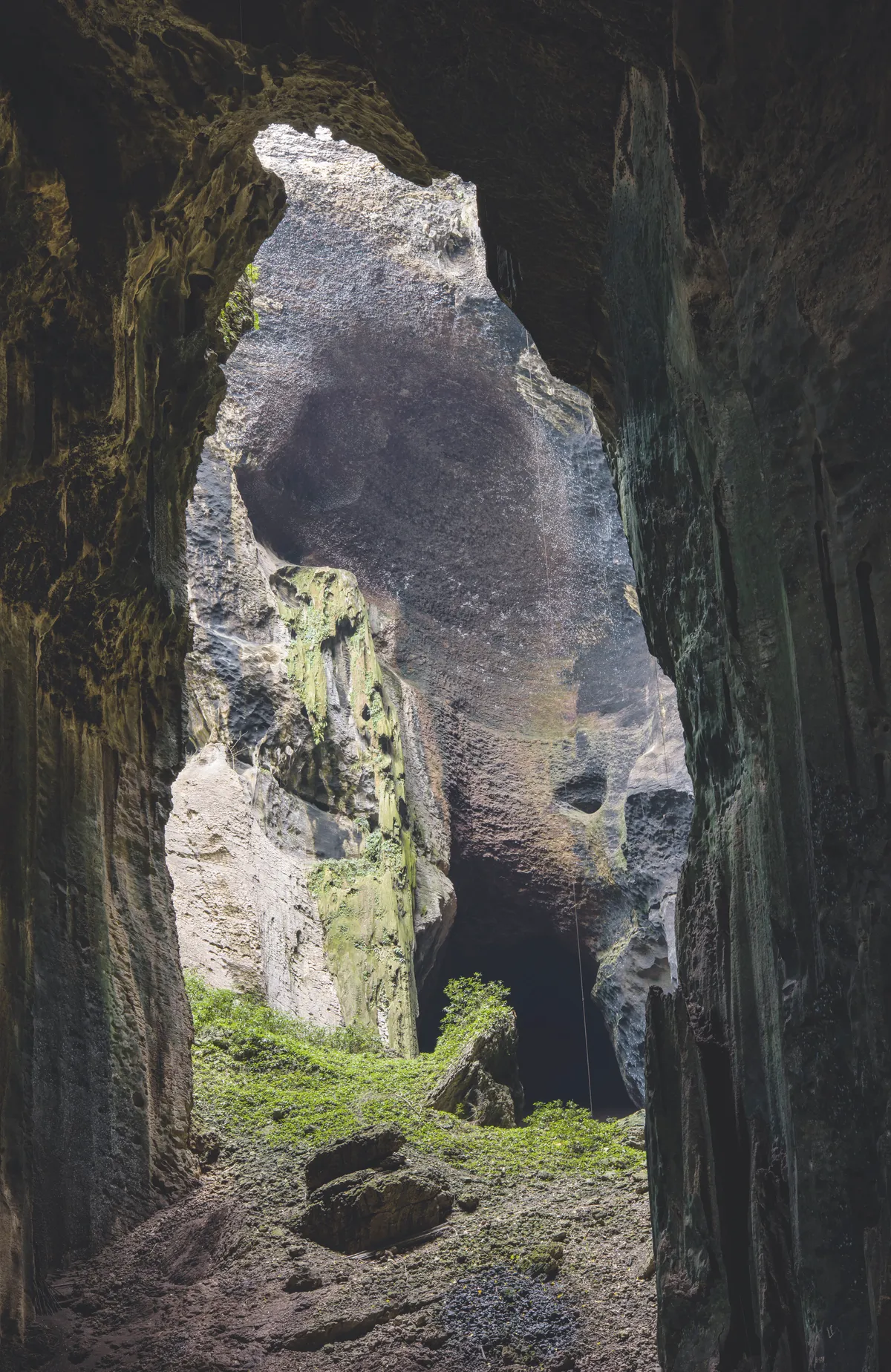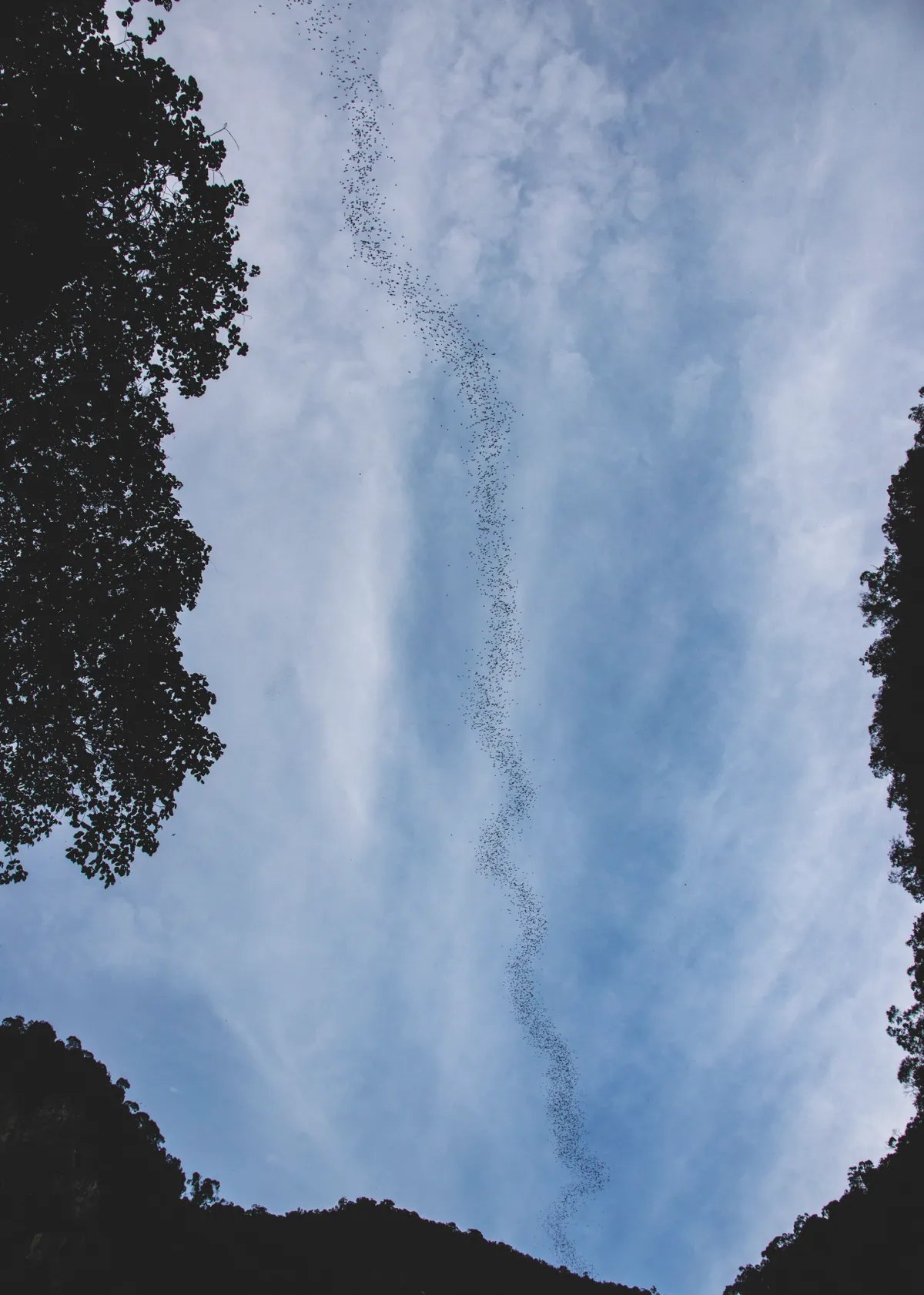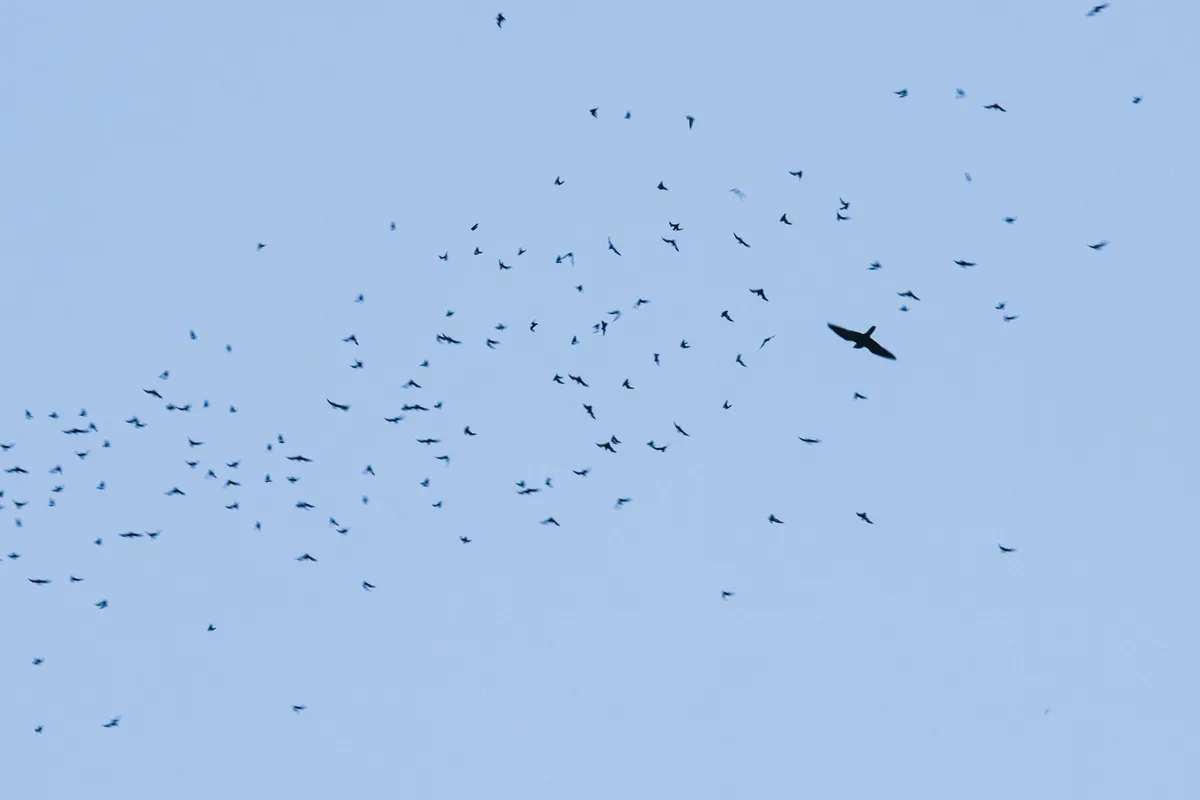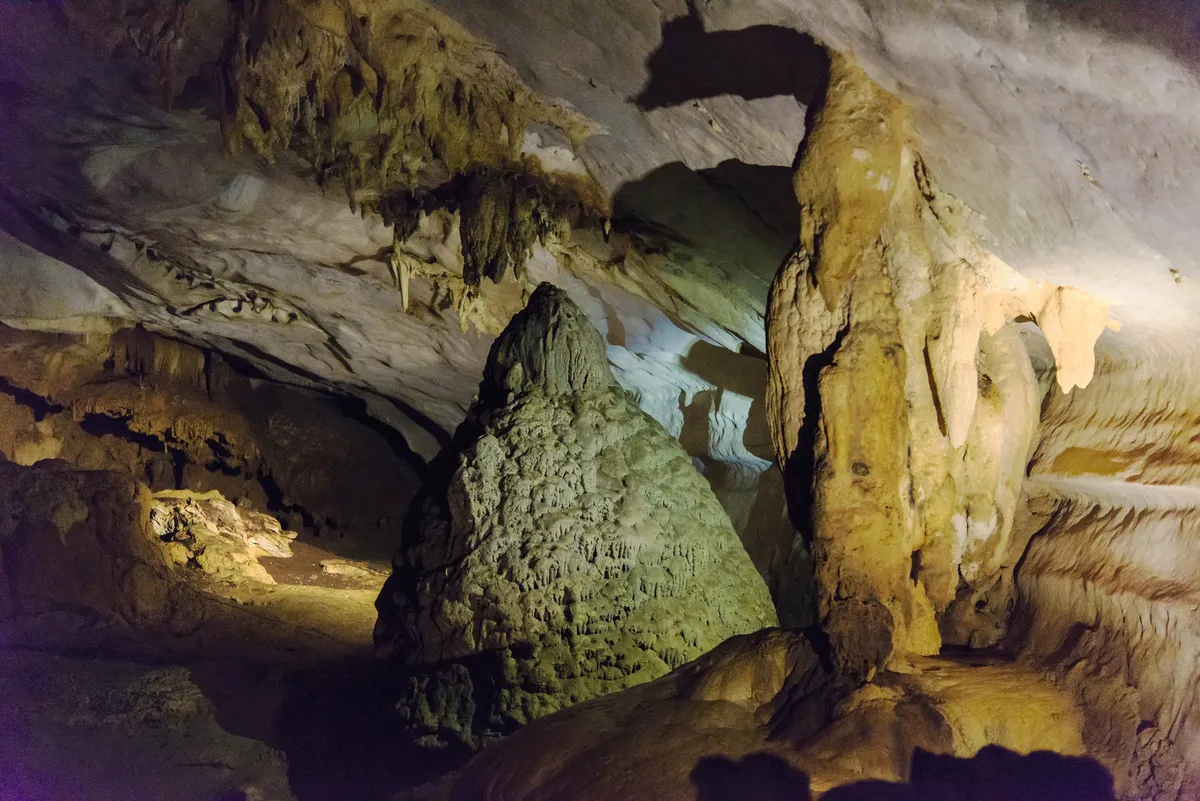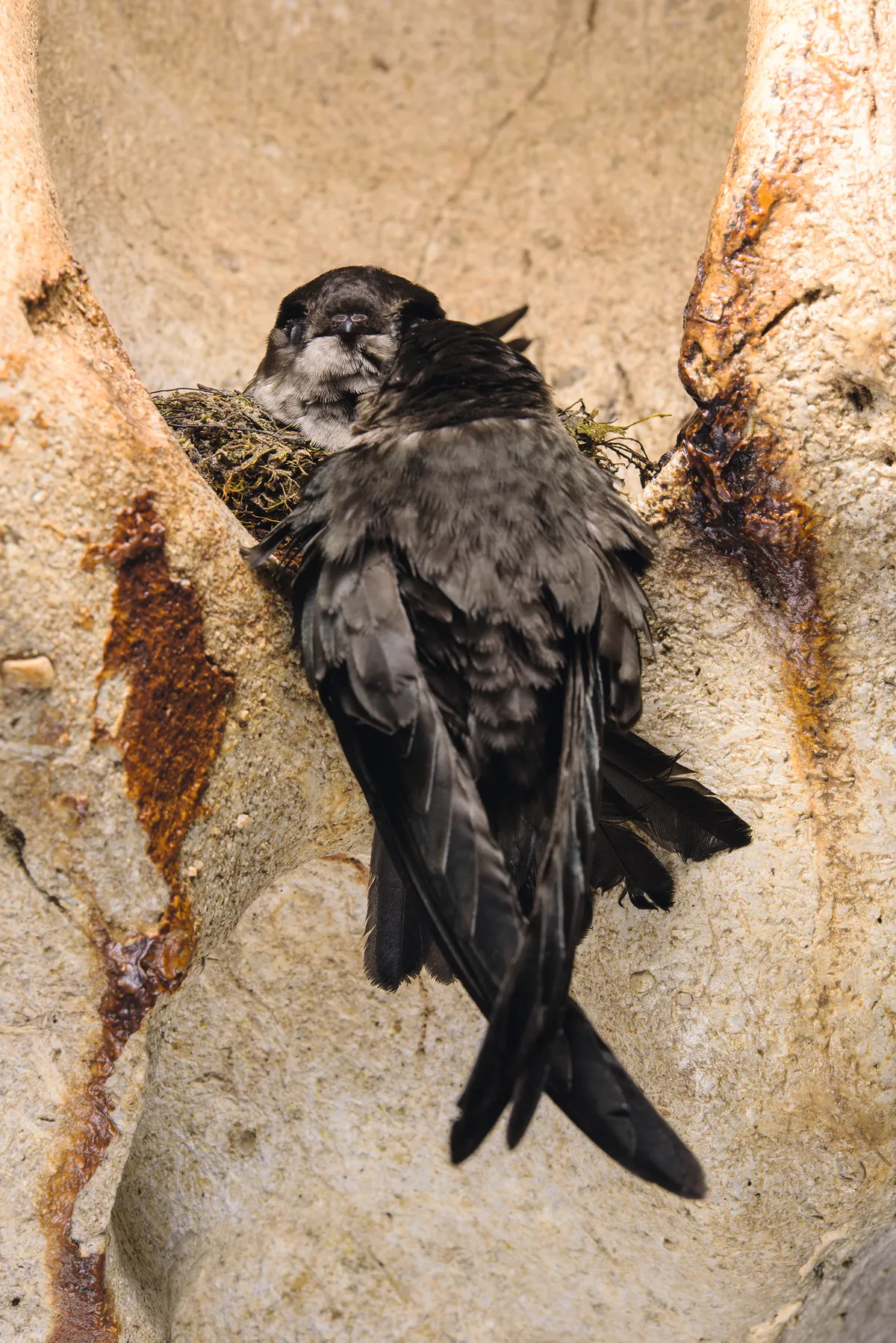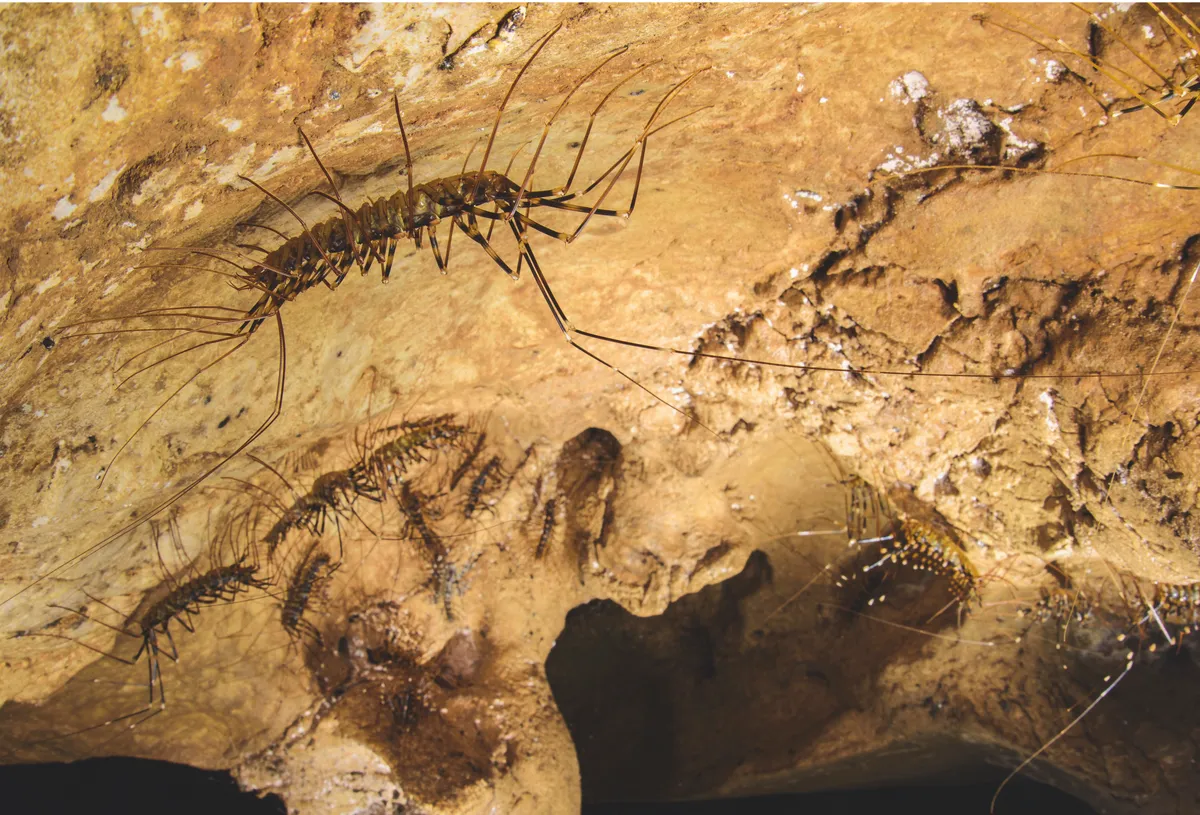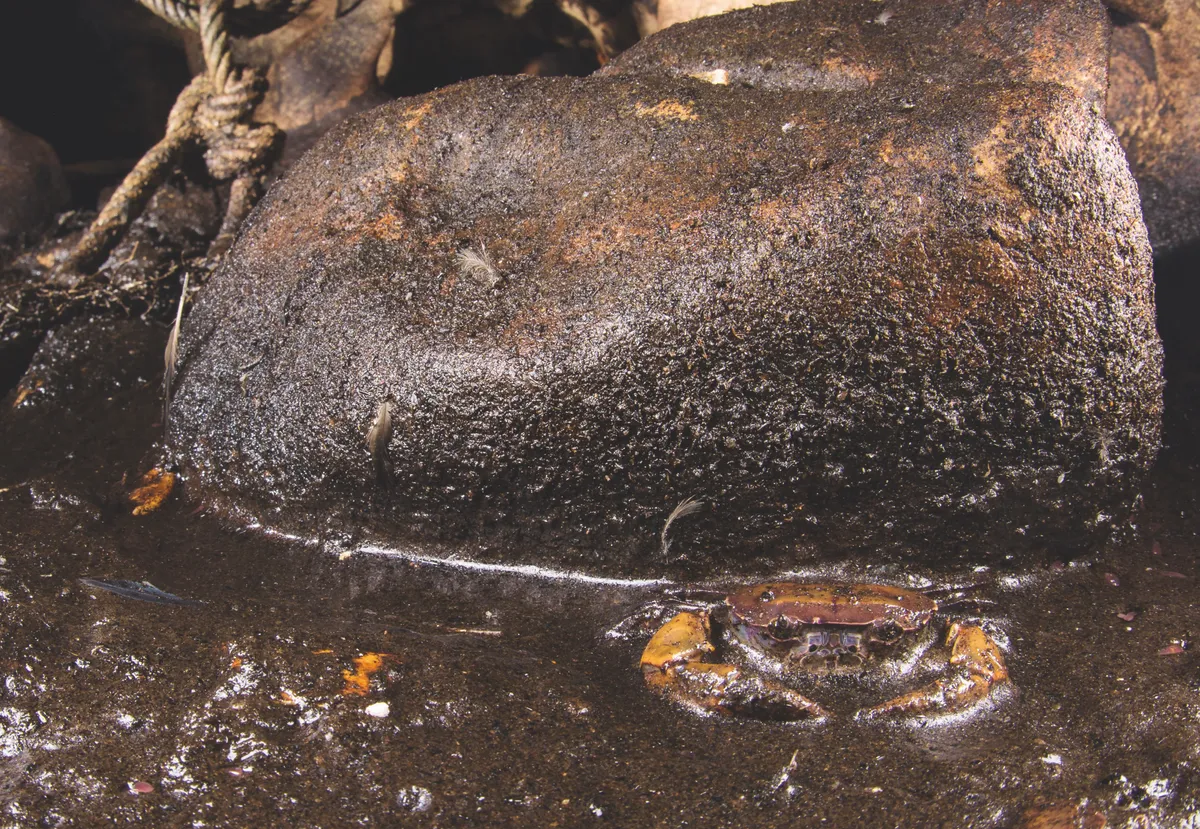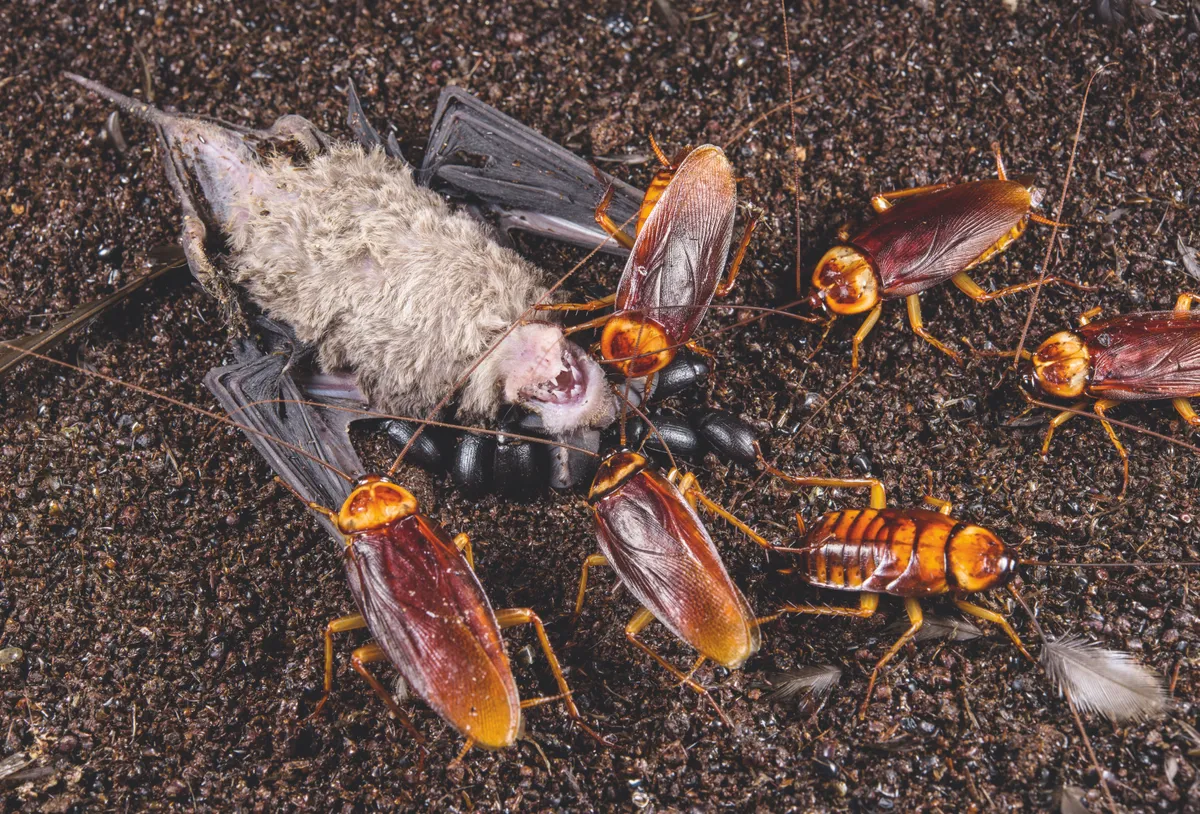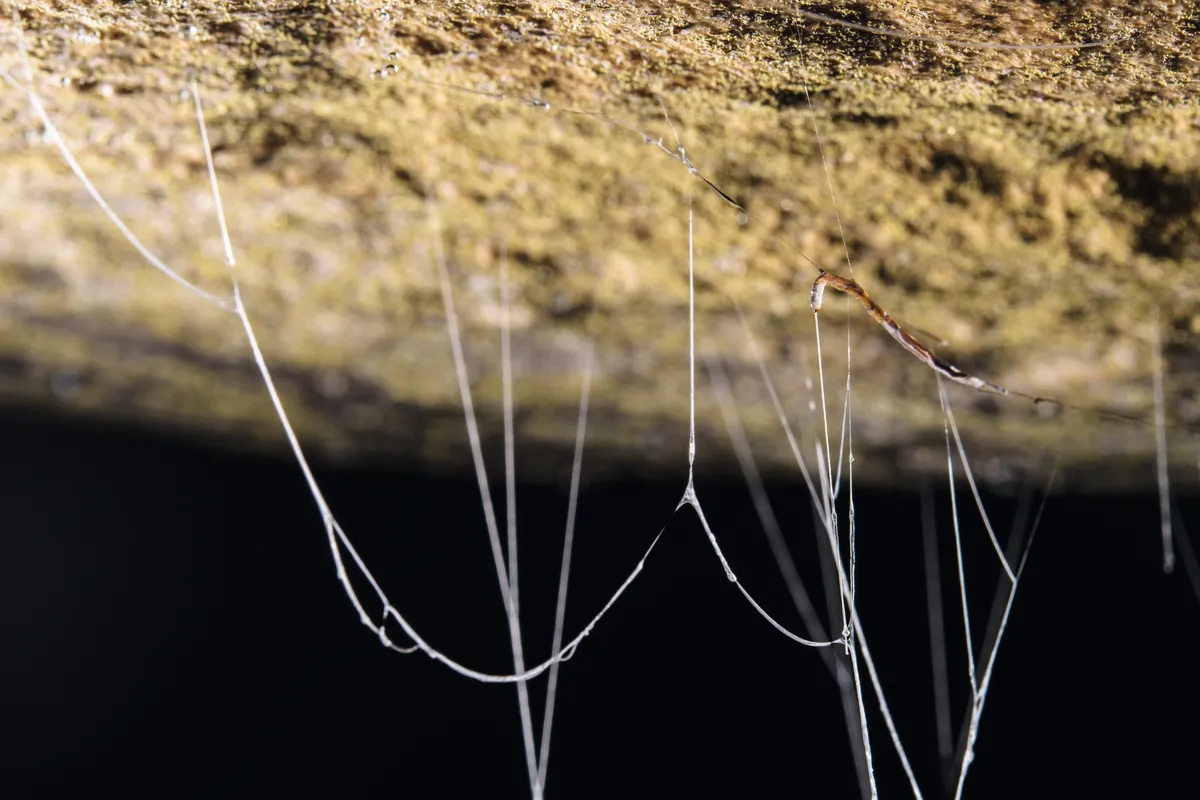About the photographers.
Emanuele Biggi and Francesco Tomasinelli are both based in Genoa, Italy. Emanuele is a naturalist, wildlife photographer and TV presenter, while Francesco is a biologist and photojournalist.
Find out more about the work of Emanuele Biggi and Francesco Tomasinelli .
To view the images as a slideshow, click on the arrows in the top right hand corner of the photos below.
Millions of bats and swiftlets share the Gomantong Cave system, Gomantong Forest Reserve, Sabah, Malaysia, on the island of Borneo. Their guano supports a rich ecosystem. These Australian cockroaches live in the caves and eat decaying organic matter. © Emanuele Biggi and Francesco Tomasinelli. In the Gomantong Cave system a wrinkle-lipped free-tailed bat pup has fallen from the cave’s ceiling and its mother’s protection. An Australian cockroach is waiting for it to give up its struggle for life and become its next meal. © Emanuele Biggi and Francesco Tomasinelli. Even near the entrance of the Gomantong Cave system Australian cockroaches cover the walls from floor to ceiling. Guano excreted by the swiftlets and the bats covers the floor of the caves in a layer metres thick. © Emanuele Biggi and Francesco Tomasinelli. A female cave spider protects her egg sac on the wall of one of the caves in the Gomantong system. The species mainly feeds on small flying insects that enter the cave from outside, together with any cockroaches that fall into their sticky webs. © Emanuele Biggi and Francesco Tomasinelli. One of the main entrances to the Gomantong Cave system. Twice a year local people follow a tradition from the middle ages and pass through here to collect empty swiftlet nests, which are used to make bird’s nest soup – though the activity is now licensed. © Emanuele Biggi and Francesco Tomasinelli. More than three million bats of 12 species live in the Deer Cave complex. Here a seemingly endless stream flows outside to begin the night’s activity. © Emanuele Biggi and Francesco Tomasinelli. Leaving the Deer Cave complex in Gunung Mulu National Park at dusk to hunt is dangerous for bats because a bat hawk waits outside for them. As a defensive strategy the winged mammals often circle in the air outside the cave before creating the typical stream formation. © Emanuele Biggi and Francesco Tomasinelli. These dramatic stalactites and stalagmites can be found in Lang Cave, which is connected to the Deer Cave complex. © Emanuele Biggi and Francesco Tomasinelli. Unlike most other birds, swiftlets can echolocate, which is invaluable for navigating cave complexes. These black-nest swiftlets in Lang Cave are almost ready to fledge. © Emanuele Biggi and Francesco Tomasinelli. Giant centipedes prey on small spiders and cockroaches in the Gomantong Cave system. The species is equipped with a stinger – the venom is painful to humans, though not dangerous. © Emanuele Biggi and Francesco Tomasinelli. The world’s only confirmed population of the freshwater crab is found near the main entrance of the Gomantong Cave system. The crustaceans feed on the guano, dead animals and insects that have fallen from the ceiling. © Emanuele Biggi and Francesco Tomasinelli. Australian cockroaches and beetles perform a vital role in the Gomantong Cave system by consuming the flesh of dead animals, such as this young bat, preventing the outbreak of dangerous diseases. © Emanuele Biggi and Francesco Tomasinelli. The larvae of fungus gnats excrete sticky trap-lines to capture small flying insects entering the Deer Cave complex in Gunung Mulu National Park. © Emanuele Biggi and Francesco Tomasinelli. These images originally appeared in BBC Wildlife Magazine . Take a look inside the current issue and find out how to subscribe.
